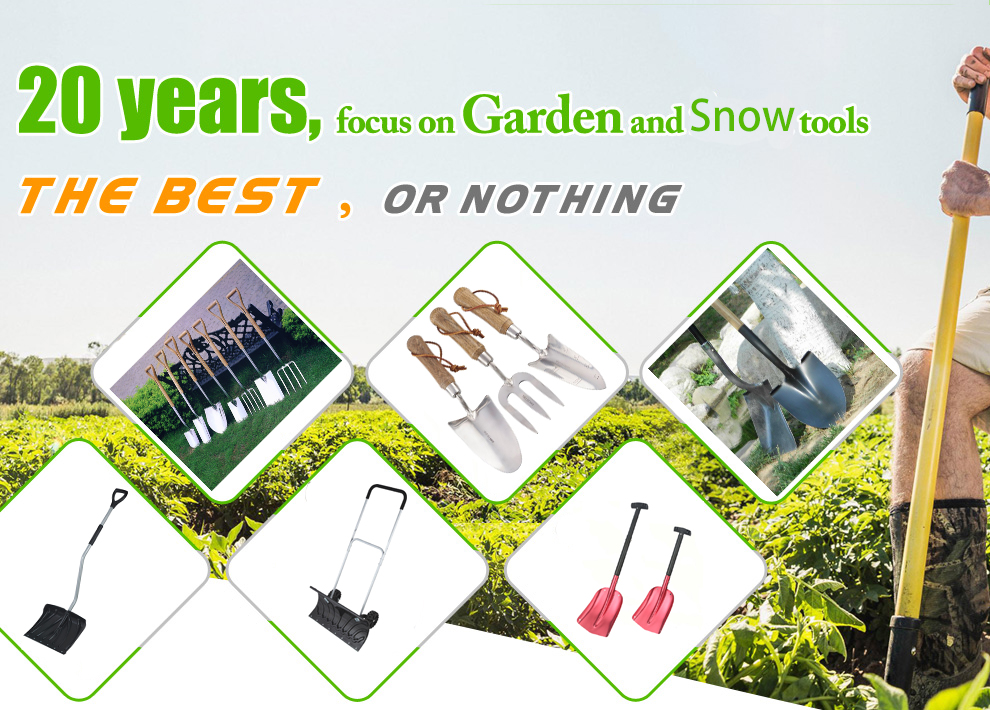Love to garden? With gardening so popular these days, there aren't many backyards that don't have at least one patch, pot, or container with something growing in it. But most likely, you're paying a lot of attention to your plants and not so much to the tools you use to grow them. Trowels, hoes, spades, and shovels take a lot of abuse during the growing season, and if you take a little time to love them, they'll work better and last longer for you.
Before we talk about the garden gear you already have, remember when buying new Gardening Tools that spending more on high-quality tools will save you grief and money in the long run. Pay a little extra for a tool that will last, rather than cheap tools that will wear out and need to be replaced frequently. And then use them appropriately! As the saying goes, when all you have is a hammer, everything looks like a nail-but using a tool for something it isn't designed to do is a quick way to damage or break it (and even hurt yourself in the process). A long-handled shovel is not a crowbar, the back of an ax is not a sledge hammer, and a hand pruner is not designed to saw through a one-inch branch. If you need to do something your current stash of tools isn't up to, consider buying something suitable, borrowing from a friend, or renting one for a few hours (a good solution for specialty tools you won't need often).
Once you have a set of good Gardening Tools, here are 6 easy ways to maintain them, starting with storage!
Store Them Safely
A shed is a tool's best friend because after misuse, the number one enemy of tools is exposure to the elements. Tempting as it may be to leave your tools where you will need them tomorrow (or next week), don`t do it! Store all your tools in a shed, garage, or even a weatherproof tool storage unit out in the garden (a rural mailbox makes a great weatherproof stash for hand tools), and they will last many times longer than tools that spend time out in the sun, rain, and wind (or get hidden in the tall grass and then get run over).
Outdoor storage is worst for wooden handles, which can roughen, crack, split, warp, and rot over time. The ideal tool-storage area protects your tools from the weather but allows for air circulation, so tools can dry and rust and mildew are less likely to occur.
Keep Them Clean
Soil holds moisture and encourages rust, so putting your tools away clean will help them to last longer. That's also a good way to prevent bits of weed roots and seeds or soil-borne disease from being transferred from place to place. Before you put your tools away, wash off any soil, or scrape it off with a putty knife (keep one in each of your tool storage areas). Use a rag (with a little turpentine, if necessary) to remove plant sap and resins from cutting tools. Dry the cleaned tools, especially any metal and wooden parts, with an absorbent rag.
Prevent The Spread Of Disease
If you have been working with obviously diseased plant materials, soak your cleaned tools in a solution of half rubbing alcohol and half water for five minutes to kill off any germs before drying the tools and storing them.
Make Them Sharp
Most good cooks know the value of a sharp knife, but how many gardeners realize that sharp tools make gardening tasks faster, easier, and in some cases even better for the plants? Keeping a good edge on a hoe or hand pruner is easy and will save you time in the long run. Don't wait until your tool is dull: Think of sharpening as daily flossing for your tools!
Start by looking at the edge of the blade. Many tools are flat on one side and angled (beveled) on the reverse side; other tools are angled on both sides. Also observe the angle of the "bevel." Is it sharp and thin like a knife or is just the very edge sharpened at a more blunt angle? Your goal is to maintain the original configuration.

Baby The Metal Parts
Most metal tools benefit from a thin coating of oil to prevent rust, unless they're made of stainless steel, which is immune to it. Keep a can of linseed oil in your tool shed along with a soft rag, and give your cleaned tools a quick once-over before putting them away. Please don`t use motor oil on your tools! Plenty of garden books still recommend it, but do you really want to be putting motor oil into your nice garden soil? I certainly don`t.
If you see any rust, use a wire brush or emery cloth (sort of like a nail file glued to cloth instead of cardboard and used by metalworkers) to remove it. You can also rub it away with oily sand. Keep a sturdy bucket full of sand moistened with oil in your shed, and just plunge the cleaned tool into the sand a few times. That's usually all it takes to both polish and oil your tools at the same time.
Condition The Wooden Handles
Periodically apply a thin coating of linseed oil to dry, unpainted wooden handles and buff off any excess with a clean rag the next day. A badly weathered handle will soak up quite a bit of oil, so add a thin coating daily until there is a little oil left on the surface the following day. If you can't find linseed oil at a local hardware store, head to your local natural food store. Flaxseed oil that you cook with is the same thing as linseed oil-"lin" as in "linen," the fiber made from flax. This is also a good way to use up any old flaxseed oil in your kitchen that has developed an off taste.




